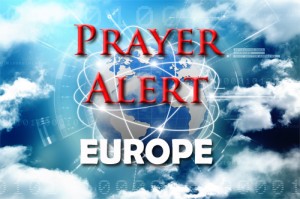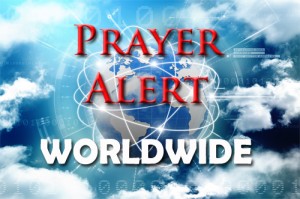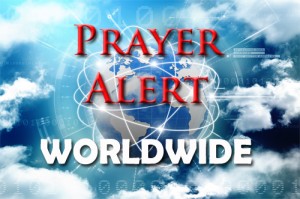Displaying items by tag: Easter traditions
Easter in Estonia
In Estonia, Easter has many names: for example Ületõusmispüha (resurrection), Lihavõtted (meat-taking holiday, marking the end of Lent), and Munadepüha (egg holiday). Easter Sunday is celebrated with a long lunch, egg painting, and an Easter egg hunt. Decorated eggs are placed in a basket as a centrepiece for the meal table. After lunch is an egg-knocking competition, creating a new champion each year. Competitors tap their egg against their opponent’s, and the shell that doesn't crack is the winner! Easter customs, like egg-knocking and egg-rolling (with the same aims as egg-knocking), come from old folk traditions. The Joshua Project describes Estonia as non-religious.
Easter in Russia
Easter is celebrated later because the Russian Orthodox church uses the old Julian calendar. On Holy Saturday churches hold night services and organise religious processions around churches. By that time, kulich, the traditional holiday baking symbolising the body of Christ, has already been baked and Easter eggs painted. The morning starts with visiting neighbours and giving Easter eggs. The common phrase on that day is, Khristos voskres! (Christ is risen!), followed by Voistinu voskres (Truly he is risen!) followed by the kiss of peace (triple kissing). Easter is the day of abundant food after the ‘Great Lent.’ A Russian tradition is to deliver gifts to poor families, distant relatives, orphanages, hospitals, prisons and beggars. They say that from Easter to the Ascension Christ, with the Apostles, travels the earth testing everyone for mercy and kindnesses.
Easter in Mexico
Semana Santa (Holy Week) is very important in Mexico. Processions and passion plays take place throughout the country, with different areas and communities celebrating in varying ways and varying degrees of lavishness. On Palm Sunday (Domingo de Ramos) processions re-enact Jesus' triumphal entry into Jerusalem, and woven palms are sold outside churches. Celebrations on Maundy Thursday (Jueves Santo) include visiting seven churches to recall the vigil the apostles kept in the garden while Jesus prayed before his arrest. There are foot-washing ceremonies, and of course Mass with Holy Communion. On Good Friday (Viernes Santo) there are solemn religious processions in which statues of Christ and Mary are carried through towns. People often dress in costumes to evoke the time of Jesus. Passion plays are presented in many communities. The largest is south of Mexico City, where over a million gather. Some places burn an effigy of Judas on Holy Saturday. There are no Easter Bunnies or chocolate eggs in Mexico. People go to church and families celebrate quietly.
Easter in Greenland
There are 3,300 Americans, 7,600 Danes and 44,000 Eskimos in Greenland. Although they profess to be a Christian country, the most important Greenland holiday is National Day followed by Arctic Palerfik (an April dogsled event) and the Polar Circle Marathon. At Easter homes and shops are decorated in green and yellow with branches and daffodils. The Easter symbol is the egg, and a tradition is sending teaser letters. In the weeks before Easter people cut out elaborate letters, on which they write a so-called teaser verse. The anonymous letter is signed with a number of dots corresponding to the number of letters in the sender’s name. The recipient must guess who sent it. The pledge is a chocolate Easter egg redeemed at Easter. The letter is accompanied by a snowdrop, the first flower of the year.
Easter in China
New Catholics are traditionally baptised on Easter Sunday. In recent years, there has been a large increase of baptisms in Catholic churches at Easter time. Chinese Catholic churches don't have an official connection to the Pope. Some established churches treat Easter like a mini Chinese New Year, complete with red paper slogans called chūnlián (春联) on the church building and in the homes. There can be special music and decorations, with Easter eggs given as gifts or sold outside the church. Smaller Christian home groups celebrate, as family or friends quietly or even secretly say simple prayers, talk and meditate on the resurrection of Jesus Christ.




